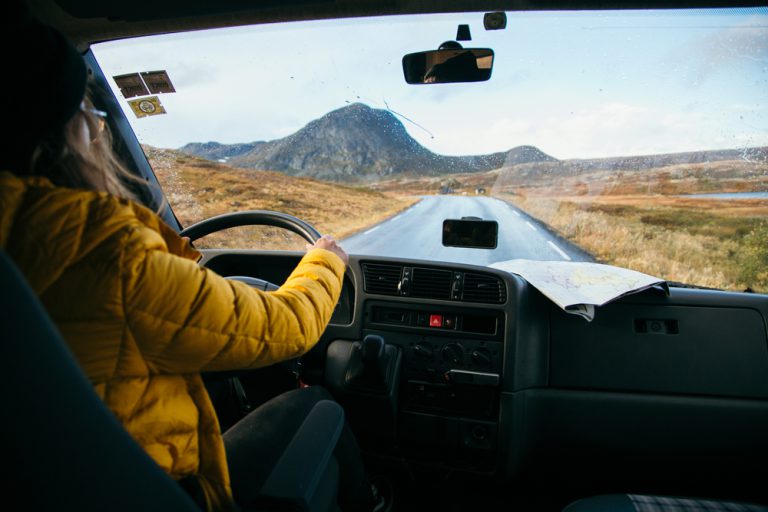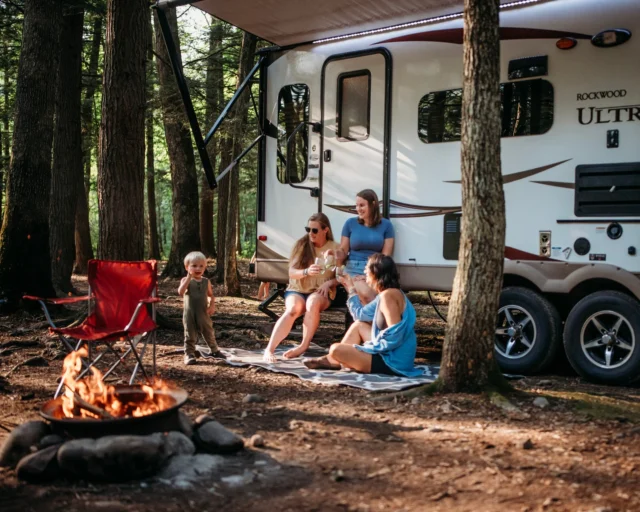
The day has finally arrived for your first, or hundredth, reservation. Your excitement level is high as your mind rushes through a course of thoughts ensuring that your unit is ready for the road. You review the mental checklist in your head to go over with the renter, yet when the time comes and the renter is driving away, you realize you’ve forgotten key information the renter should have known before releasing your unit. You mentally kick yourself for forgetting it and wished you had an actual list to review and check off. Allow RVshare to step in and assist you by providing a step-by-step guide for handing your RV over to your renter.
Below you will find a compilation of steps on how to best prepare your unit before the renter arrives and what you should review with the renter once they take-off on their journey.

Complete the Departure Form
The Departure Form is in place to help you keep track of your unit before departure. You will receive an email 48-hours prior to the reservation start date notifying you that the Departure Form is open, and it can also be located in the Reservation Details column of the Inbox messages with the renter. The Departure Form allows you to document the details of your unit before the renter’s trip. The form has three sections to complete:
- Tank Levels and Gauge Readings: While this section varies based on if you have an RV or travel trailer, it allows you to document the starting level readings of the odometer, generator, fuel tank, propane, and waste tanks.
- Document RV Condition: This section allows you to upload multiple photos to help document the condition your unit was in before departure.
- Additional Drivers: Both parties will have access to this section of the Departure Form, as either party can add up to three additional drivers. It is important to note that additional drivers must be 25 years of age or older and have a valid driver’s license to be eligible for insurance coverage.
The renter will also be emailed the Departure Form to review and submit any additional drivers, and it can be found in the same location in their Inbox messages with the owner. Make sure that you and the renter sign your initials and select the “Submit” button on the Departure Form to ensure it is properly logged in the Documents section of your Dashboard Inbox with the renter.

Maintain Your Organization Through Checklists
While the renter may be excited to start their RV experience and hit the road, you want to ensure they fully understand every detail of your unit before you trust it in the renter’s hands. This is why we always recommend setting an hour or more aside pre- and post-reservation to review your unit with the renter. Take the time to walk around your unit with the renter, crawl under it to make sure nothing is hanging down that could be scraped in transit, check the condition of all internal and external doors, be thorough in your explanations of how things work.
“How To” Checklists
It is helpful to have a “How to” checklist in hand to make sure you are reviewing everything with the renter. While there is a multitude of steps to go through when preparing a unit, some key sections you may want to cover with the renter include how to:
- Read and understand the tank levels and gauge readings.
- Empty the black and grey tanks.
- Refill the water tanks.
- Lock all external compartments.
- Extend and retract the awning.
- Ensure the unit is level for any slide outs.
- Switch the refrigerator from LP usage to gas usage.
- Fill the gas tank and refill the propane.
- Switch the water flow from the tanks to the hoses.
- Use the generator.
- Shut off the gas.
- Hook up the electrical.
- Turn on lights internally and externally.
Operational Checklists
You want to make sure that your unit is safe for the road to prevent any accidents from occurring. It is good to get yourself in the habit of a walkthrough of your unit where you check the following:
- Oil level
- Transmission fluid level
- Head and tail lights
- Tire pressure (Inclusive of the spare tire too)
- Generator and propane levels
- Dumping ability of black and grey tanks
- Appliances (Make sure the refrigerator, microwave, shower, toilet, etc. are all in working order)
- Slideouts are all working
Maintenance Checklist
While this checklist may seem similar to the operational checklist above, it’s still smart to upkeep the maintenance on your unit. Ensure that you are regularly checking the following:
- Service the brakes and tires: Ensure your brakes are in working order and will stop the unit when needed. Inspect your tires for any signs of dry rot, pressure leaks/holes, and if there is enough tread on the tire.
- Test your safety equipment: You want to make sure that the renter and your unit are both protected in case of an accident occurring.
- Clean the air-conditioner: Make sure the filters are clean, the vents are working, and that nothing is clogging the airflow.
- Check under the hood and the underbelly: Make sure there are no potential leaks and that all hoses and clamps are secure.
- Grease the slide outs and check the awning: You want to make sure that the tracks to your slideouts are properly lubricated. Also, ensure there are no holes in your awning and that it is securely attached to the unit.
Don’t hesitate to also review our RV maintenance checklist under our guides.

Documentation is Key
Lastly, take time to review any additional necessary information the renter will need to know. Provide a contact list of who the renter should reach out to in case of an emergency with the unit. Recommended contact details would be:
- Yours, your partner’s, or a trusted relative’s contact information. This allows the renter to contact you, or someone who can notify you, if the renter has any questions or needs assistance with the unit.
- The contact information of Nation Safe Drivers (NSD), which is the roadside assistance that is provided through RVshare. This information will be emailed to the renter directly prior to the booking, but it doesn’t hurt to make sure they are aware this assistance is available. If utilized, the renter will need to provide the policy number, which is the same as the RVshare reservation number. NSD can be contacted at 844-964-6249.
- The contact information for RVshare. The Customer Support Team is available 24/7 and can assist in situations where the renter is unable to get in contact with you. They are also available to answer general questions at 888-482-0234 or you can complete the Customer Support webform here.
It is helpful to print off the insurance addendum for each reservation and place it in the unit for the renter in case it is needed. If the RVshare Rental Insurance is not in place for this reservation, then make sure to review any proof of insurance. It is also recommended to confirm any additional driver information with them, as well as request proof of license.
Overall, don’t forget that you are allowing someone to experience a trip of a lifetime with your RV or travel trailer. The rental process should be fun and exciting for both parties involved.






